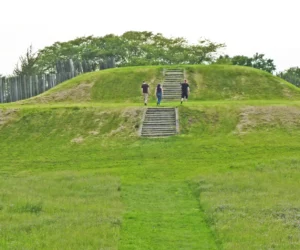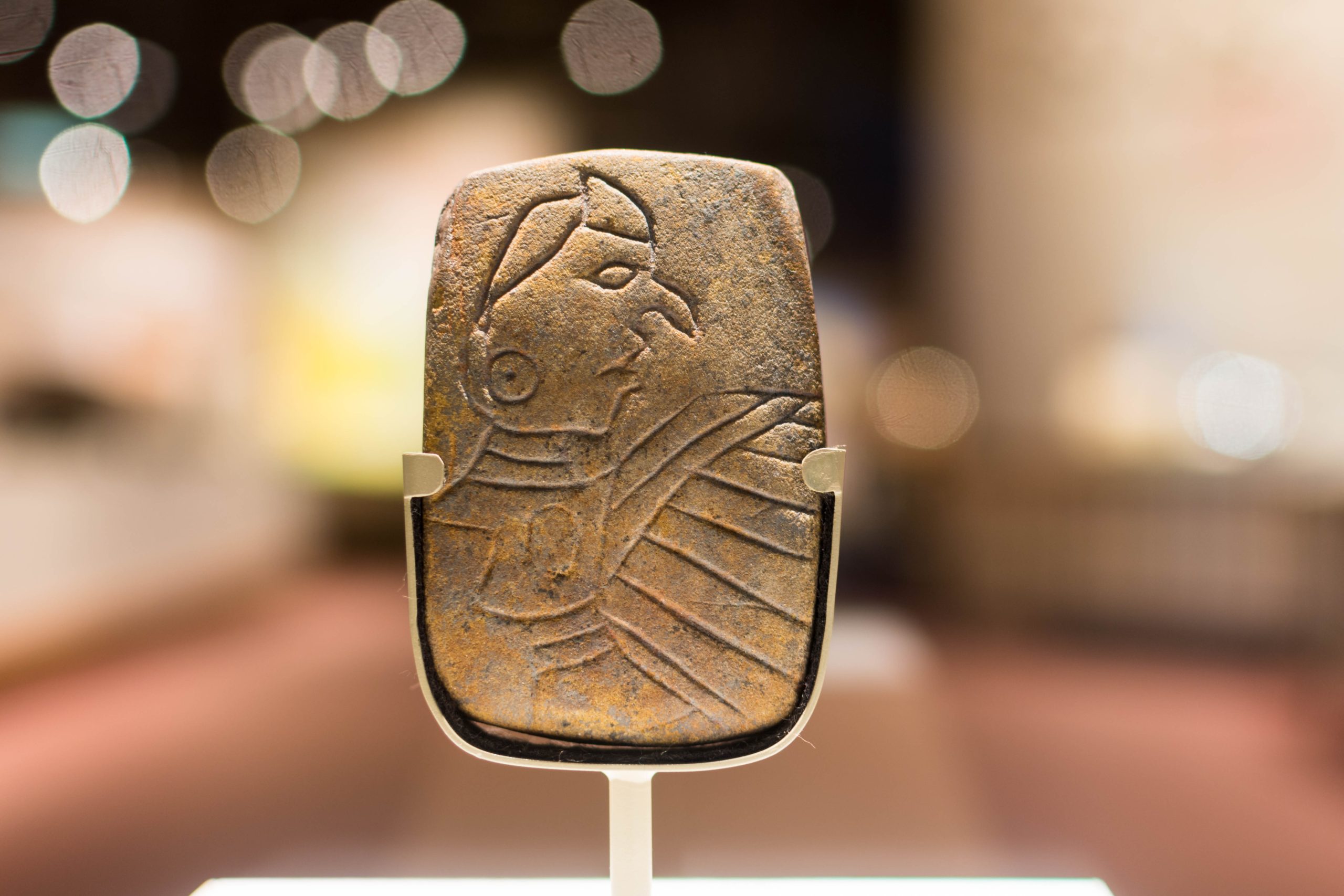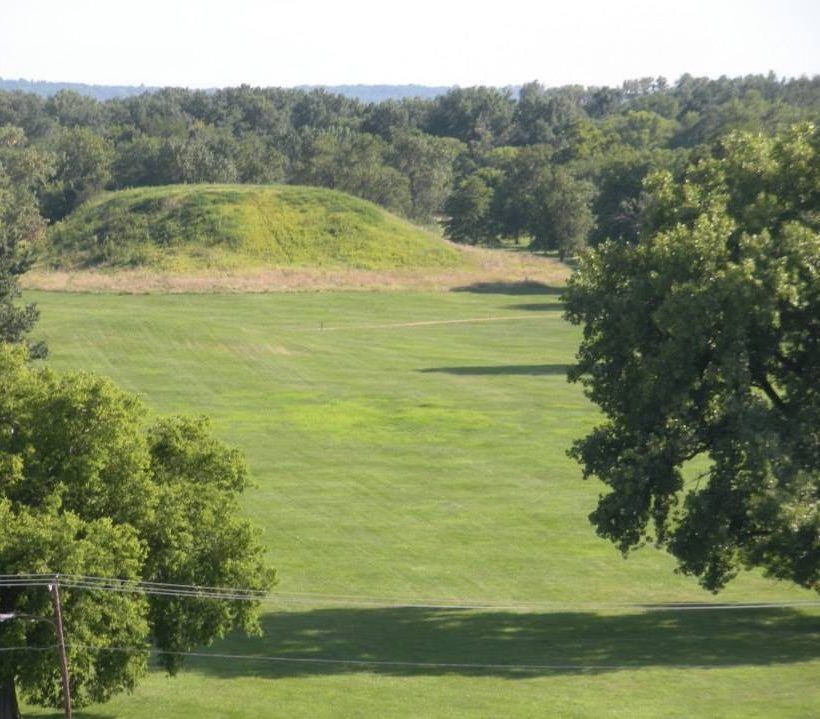Ocmulgee Mounds National Historical Park Overview Ocmulgee Mounds National Historical Park, located in Macon, Georgia, USA, spans 3,336 acres. It was established on December 23, 1936. The park preserves over ten millennia of Southeastern Woodlands Native American culture. Notably, it features major earthworks built before 1000 AD by the South Appalachian Mississippian culture. These structures…
Mississippian civilization
The Mississippian civilization was a Native American culture that thrived between 800 CE and 1600 CE, predominantly along the Mississippi River Valley, hence its name. This civilization is well-known for its large earthen mounds, such as Cahokia in present-day Illinois, which is considered the largest archaeological site north of pre-Columbian Mexico. These mound complexes served as civic centers, religious sites, and elite residences. The Mississippians cultivated maize extensively, which supported their population’s growth and allowed for elaborate social and political structures.
The Mississippian civilization was remarkable for its intricate societal hierarchy, artwork, and extensive trade networks that connected different regions. Craftsmanship, particularly in pottery, stone, and shell carvings, was advanced, as were their agricultural techniques. This period is also marked by the spread of the Southeastern Ceremonial Complex, a series of motifs and iconography associated with Mississippian culture’s religious and political life. After flourishing for hundreds of years, the Mississippian civilization began to decline due to factors such as environmental changes, over-hunting, and conflicts. Despite this decline, the Mississippians left a marked influence on the cultures of the Southeastern United States, visible in the genetic and cultural heritage of many Native American tribes today.

Aztalan State Park
Aztalan State Park: A Glimpse into Ancient History Aztalan State Park is in the Town of Aztalan, Jefferson County, Wisconsin. Established in 1952, it became a National Historic Landmark in 1964 and was added to the National Register of Historic Places in 1966. The park spans 172 acres along the Crawfish River. Ancient Mississippian Culture…

Birdman of Cahokia (Mound 72)
The Mississippian culture, which thrived from 1050 to 1500 AD, is renowned for its mound-building achievements, particularly in the city of Cahokia, located in the American Bottoms near East St. Louis. This civilization’s spiritual and societal complexities are epitomized by a unique artifact: a small sandstone tablet depicting a figure in a bird costume, believed to represent an eagle or peregrine falcon. Discovered on the east side of Monk’s Mound in 1971, this tablet, dating back to 1300 AD, stands as the only complete example among similar finds. Its reverse side features a crosshatch design, possibly symbolizing snakeskin. Monk’s Mound, the largest in the Cahokia complex, is a testament to the city’s grandeur, once the largest north of Mexico. In recognition of its significance, Cahokia Mounds was designated a World Heritage Site in 1983, with the birdman tablet becoming a symbol of the site.

Etowah Indian Mounds
The Etowah Indian Mounds are a prehistoric Native American archaeological site located in Bartow County, Georgia. They are considered one of the most significant Mississippian culture sites in the Southeastern United States. The site includes six earthen mounds, a plaza, village site, borrow pits, and defensive ditch. The largest mound, Mound A, rises over 60 feet high and is thought to have been the platform for the home of the site’s chief or for religious ceremonies. These mounds were part of a society that thrived from around A.D. 1000 to 1550, and they offer a glimpse into the organization, culture, and daily life of the indigenous peoples of the region.

The Cahokia Mounds
The Cahokia Mounds stand as a testament to the ingenuity and cultural achievement of the Mississippian people who thrived from 700 to 1400 A.D. This fascinating historical site, located in present-day Illinois, encompasses the remains of this pre-Columbian Native American city. Here, visitors discover a complex society, rich in rituals and organizations, evident from the numerous ceremonial mounds spread across the area. Cahokia Mounds reveals the social and political structure of the time through its central features like the Grand Plaza, used for gatherings and important events, and Monks Mound, the largest prehistoric earthen construction in the Americas.

